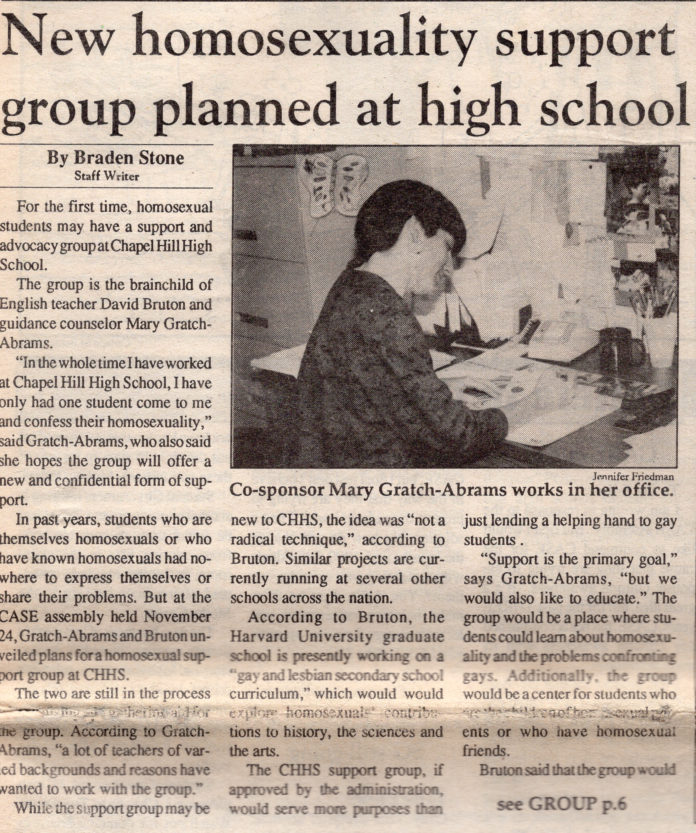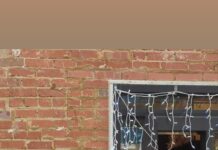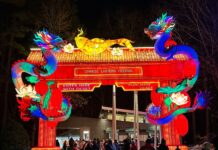
QSA at 25: Part One
This article is the first in a series of articles examining the founding and legacy of the Queer-Straight Alliance at Chapel Hill High School.
The letter got Ken Stewart’s attention. It came from a young Latino man who had just gone back to his country from North Carolina, where he had been an exchange student at Chapel Hill High School. At Chapel Hill, the student participated in the Spanish Club, which Stewart advised, and he was welcomed into his host family.
In the letter to Stewart, the student came out as gay. “It took a lot of courage,” Stewart recalled.
It was the 1990s. Gays and lesbians, in the United States and worldwide, still were routinely discriminated against and at risk of unwarranted suspicion, losing their jobs, being prevented from renting apartments and worse.
Though Stewart never taught the student in a class, he continued to correspond with him. The student “liked to return to Chapel Hill” and must “have felt a safe haven here,” Stewart said. “Maybe that’s the kind of outlet he was looking for when he went on an exchange program, that it was something he couldn’t have faced in his home country.”
More than mentoring him, Stewart wanted to connect with the student, but he didn’t always know how.
“I was a very young teacher,” Stewart, who was then just starting his career but would teach Spanish at Chapel Hill for almost 30 years, said. “I didn’t feel like I had enough life experience or teaching experience to deal with such delicate issues.”
At Chapel Hill High School, the Gay-Straight Alliance (GSA)—the first in North Carolina—changed how people thought. By co-founding the GSA in 1994, English teacher David Bruton, a gay man, developed a space where lesbian, gay, bisexual, transgender and queer (LGBTQ) students and their allies could connect and plan. Now marking its 25th anniversary, the student group known today as the Queer-Straight Alliance may not have fully reversed prejudices, but it has raised the general awareness of issues that LGBTQ students face at Chapel Hill and in the area.
Nationally, in the latter half of the 20th century, the awareness and acceptance levels of non-heterosexual orientations were growing; the World Values Survey found that about 62% of Americans in 1981 felt that homosexuality was “never justifiable,” but only 31% did in 1999. Like many large social movements, the campaign for LGBTQ rights—which included pride parades, legislation, art and community building—continually faced backlash as it tried to transform perceptions at every level of society.
“People thought it was a sex club at first,” Melissa Weiss, who founded Safe Schools NC and consulted with the GSA in its early years, said of the student group. “We had to figure out how we could rephrase the message so that people would know the club is about equal rights and stopping bullying.”
***
Chapel Hill High School’s faculty of the 1980s and 1990s “saw itself as an independent fiefdom,” Tony Yount, who from 1985 to 2001 taught history and advised Hillife, the school yearbook, said. In 1999, The Wall Street Journal recognized Chapel Hill as one of the top-performing schools in the United States. According to Yount, five Chapel Hill history teachers, including him, were “convinced we were the best teachers God had put on this Earth.” The other departments had excellent educators too, he said. At the annual Humanities Festival, a predecessor to Tigerfest, classes would be cancelled, student clubs and teachers would invite speakers and run activities and student bands would play music.
It was a time of independence for what was then the only high school in Chapel Hill-Carrboro City Schools (CHCCS). Neil Pedersen, the district superintendent from 1992 to 2011, said that Chapel Hill High School “had historically operated with quite a bit of autonomy.”
Yount agreed Chapel Hill had increased liberties as a school.
“Chapel Hill faculty acquired the reputation—that it still has—of being difficult to deal with,” he said, whenever “they”—meaning the school board or state legislature—“tried to tell us to do things differently,” like having ninth graders in high school or making students take a general American history test.
Race was the social issue most on people’s minds at schools like Chapel Hill. Report cards, for instance, began to show the achievement gap. “The consciousness of the discrimination that LGBT students faced was not present,” Yount said. “I was very rarely aware—I started in the ‘70s—of those issues. My radar was not nearly as raised as it was about racial issues.”
Yount said that the GSA, making itself visible, brought issues of sexual orientation to students’ and staff’s attention. “David Bruton educated people,” Yount said. “He’s a fantastic man.”
***
Teachers at Chapel Hill often took diversity trainings, sometimes needed to keep up with teaching certifications or mandated by administrators. Mostly “centered around black–white tension that we’ve seen for so long in this community,” Stewart said, the trainings had little content on sexual orientation or other issues, like how to incorporate rural or Asian-American students at school.
Asked about the formation of the GSA, Stewart said, “I don’t remember it being that earth-shattering,” and, in teacher workshops, “we never got to the root of those problems, like gender issues.”
Students in the GSA took it upon themselves to raise awareness of issues around sexual orientation, like by distributing Safe Zone posters to make classrooms visibly welcoming spaces. “I remember being proud about some of the students at the high school,” Yount said of GSA students who did outreach.
Mary Gratch, a guidance counselor who originally co-sponsored the GSA with Bruton, proudly recalled “the amazing work students did in telling their own stories to the faculty at faculty meetings. It makes my heart happy today to think about some of them,” she said, “although I also know their stories carried great pain.”
Unfamiliarity and prejudice somewhat restrained student-led trainings, Stewart said. As GSA members led the teachers in roleplaying scenarios, he recalled questions running through his head: for instance, how do I respond if a student does something like this scenario?
“It was very awkward. It was very difficult to have an open conversation about sexual orientation,” Stewart said. “We were in mixed company. It’s hard to roleplay a locker-room scene with coaches sitting there, not knowing where they stand on this.” He added, “It was a very different day and age. As long as you kept your mouth shut, it was okay to discriminate and feel hatred toward someone.”
The GSA also later hosted “Opening Doors: Understanding Issues of Sexual Orientation in the School Community,” an event that, as Bruton said, “turned into a national-level conference.”
It was set up as another way to teach people in the community about difficulties for LGBTQ students. Panels featured psychiatrists, psychologists, ministers, professors, politicians, activists and writers. The GSA’s conference, having received a several-thousand-dollar grant from the Fund for Southern Communities and donations from local businesses, families and companies across North Carolina, filled the auditorium all day on Saturday, October 1, 1994.
***
David Bruton had decided to start the GSA after harsh public reactions to discussions at Chapel Hill about LGBTQ issues.
According to a chapter that Bruton wrote for the 1994 anthology One Teacher in 10: LGBT Educators Share Their Stores, three Chapel Hill students, objecting to school discussions about gays and lesbians, went on a vandalism spree, breaking windows, spray painting homophobic graffiti against Bruton and throwing a dead possum in his room. Buses with the graffiti drove around town one morning, which Stewart thought brought discredit to the district; Pedersen noted that the buses needed to pick up students, and the vandalism was cleaned up before the afternoon runs.
Additionally, at a time when the school board was supporting multicultural teaching efforts, Bruton assigned a project to his American literature class to read books about a cultural group that they selected, one of which was gays and lesbians. In 1993–94, complaints went to Lincoln Center.
At the start of that year, Bruton, at an all-school assembly, had publicly announced the formation of the GSA, while a separate, smaller support group for LGBTQ students was to continue. The school board “viewed it [the GSA] as a positive,” Pedersen said, and Gratch said that the superintendent let GSA members give trainings to faculty.
As students, faculty, the school board and local churches expressed support for Bruton, “the milk of human kindness flowed freely,” Bruton recalled. One day, teachers at Chapel Hill staged a walkout in support of Bruton, joining hands in the courtyard outside. It was “a sign of solidarity,” Stewart said, and students took part too.
“At the assembly when I announced the formation of the GSA,” Bruton said, “the students were well behaved, polite and reacted as I imagine they would if an assistant principal had thanked them for coming to school that day. When they were dismissed from the assembly, several students came to me and said they were glad Chapel Hill High School was going to have a GSA.”
***
Any students or teachers who disagreed must have kept quiet. As Bruton put it, “the grumblers confined themselves to grumbling rather than openly opposing or hindering these groups.”
Despite the walkout, “we didn’t have 100% unity among the faculty,” Stewart said. There was “this kind of fear of retribution, not knowing who’s a friend and who’s a foe. I know I didn’t want to be in a classroom with the door closed with a male or female student.”
With a high graduation rate and low rate of teen pregnancy, “it was still Chapel Hill,” Stewart added. “It was just a different time. There were a lot of people who didn’t have a problem with [harassment against Bruton]; I treated it as a hate crime.”
Yount recalled graduating from high school just after his school became desegregated.
“The kids were much more accepting of integration than the parents were,” he said, and it was a similar story with LGBTQ rights in 1990s Chapel Hill—students, in general, progressed faster than parents.
“Dave was kind of out front,” Yount said, so he took the brunt of the school community’s homophobia.
“There was some verbal backlash, and a number of teachers remained closeted,” Gratch said, “because of fear that parents would want their students out of those teacher’s classes, that those teachers would not get tenure or that other things could happen to a teacher who is deemed a troublemaker.”
Although the town was, and is, perceived as liberal—and Yount said that some schools in North Carolina would have rejected a GSA outright—a few homophobic voices and actions were present in Chapel Hill.
“I was embarrassed not so much that there was a possum thrown,” Yount said. “I knew that [Bruton] was terrific and had great relationships with kids and taught all the kids that were in his room. I was embarrassed that there were people in our community who would question his ability to teach at Chapel Hill High School because of his sexual orientation.”
The reading-list controversy and formation of the GSA led to raised awareness of “how difficult it was for some students at our school,” Yount said.
It became a learning experience.
“Even Chapel Hill had some growing to do,” Stewart said. “I think I’ve definitely seen some improvement there in terms of students feeling safe and being able to express themselves. We’ve still got a ways to go: same-sex prom, holding hands on campus, but that’s a societal thing more than a Chapel Hill thing. We’re still ahead of most of the state, but that’s not saying much.”
Gratch and Bruton, the original GSA advisors, “were really groundbreakers,” he added.











